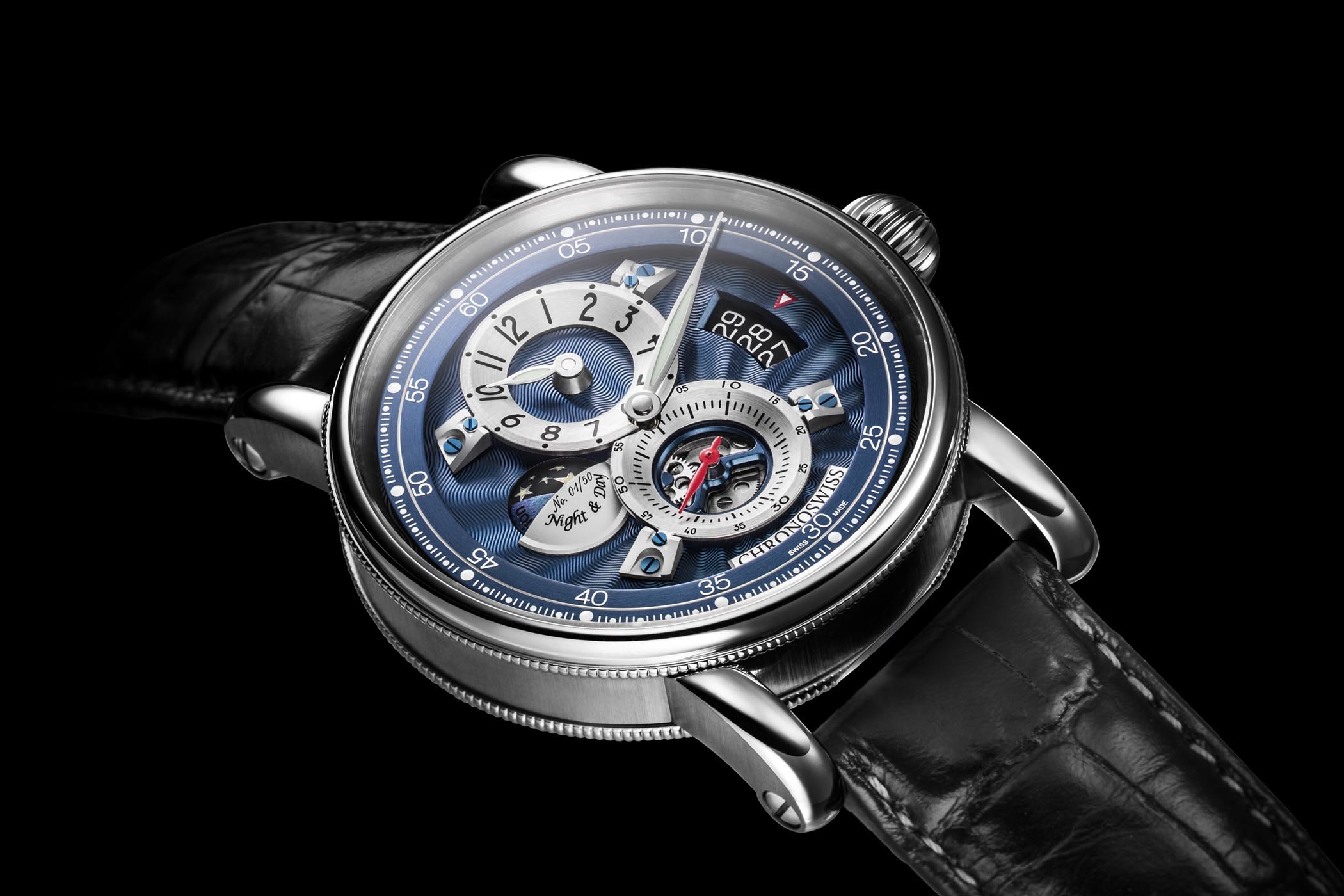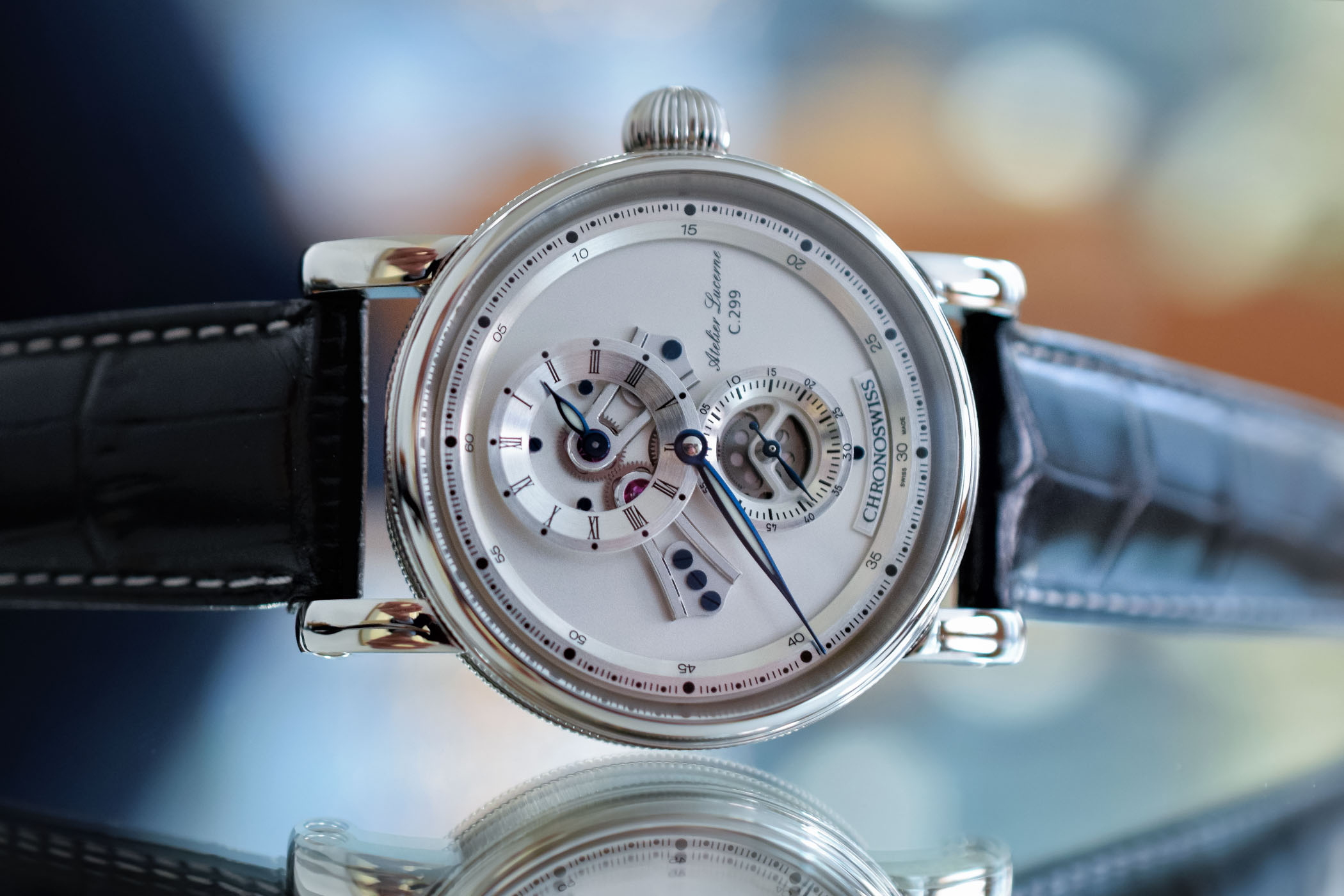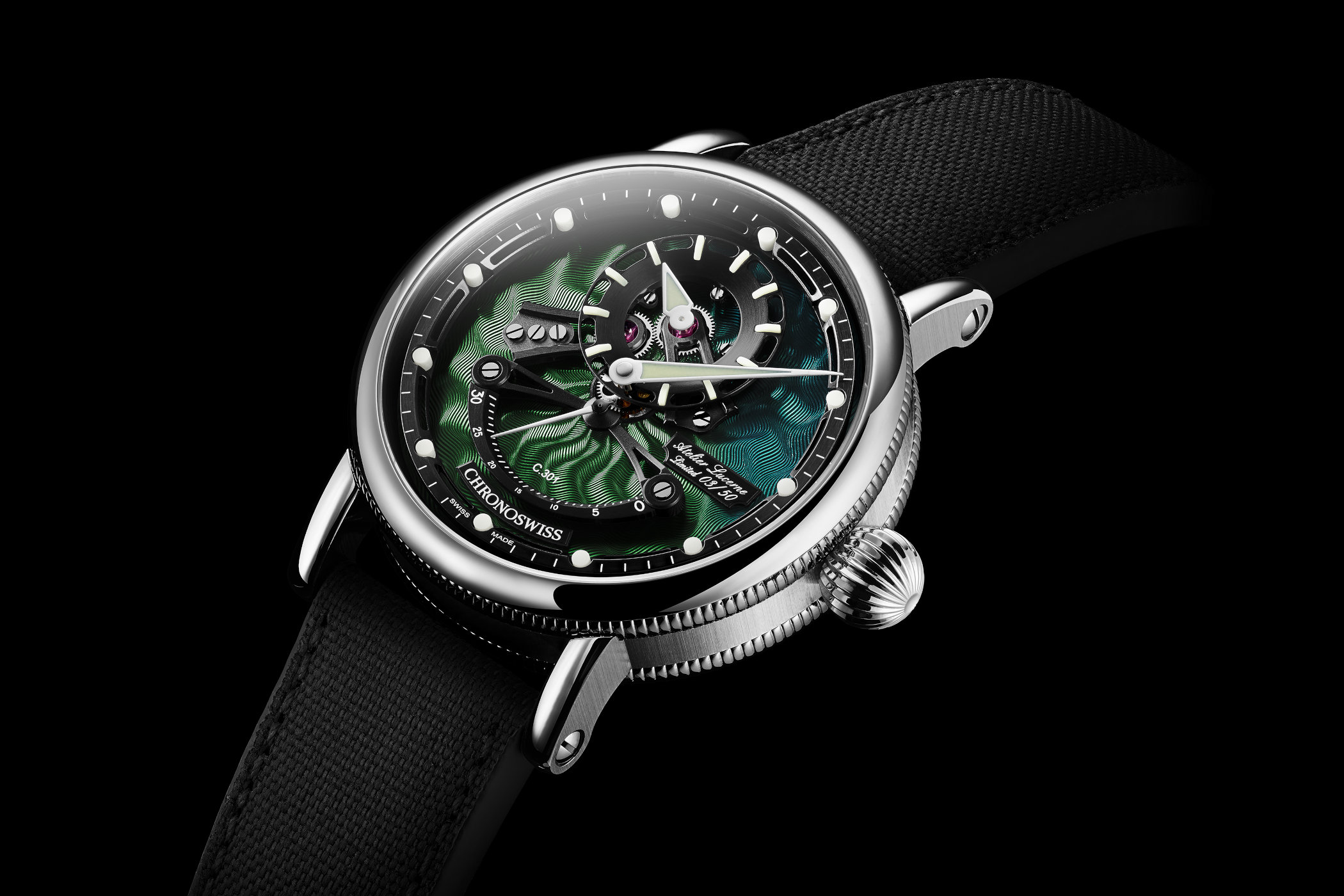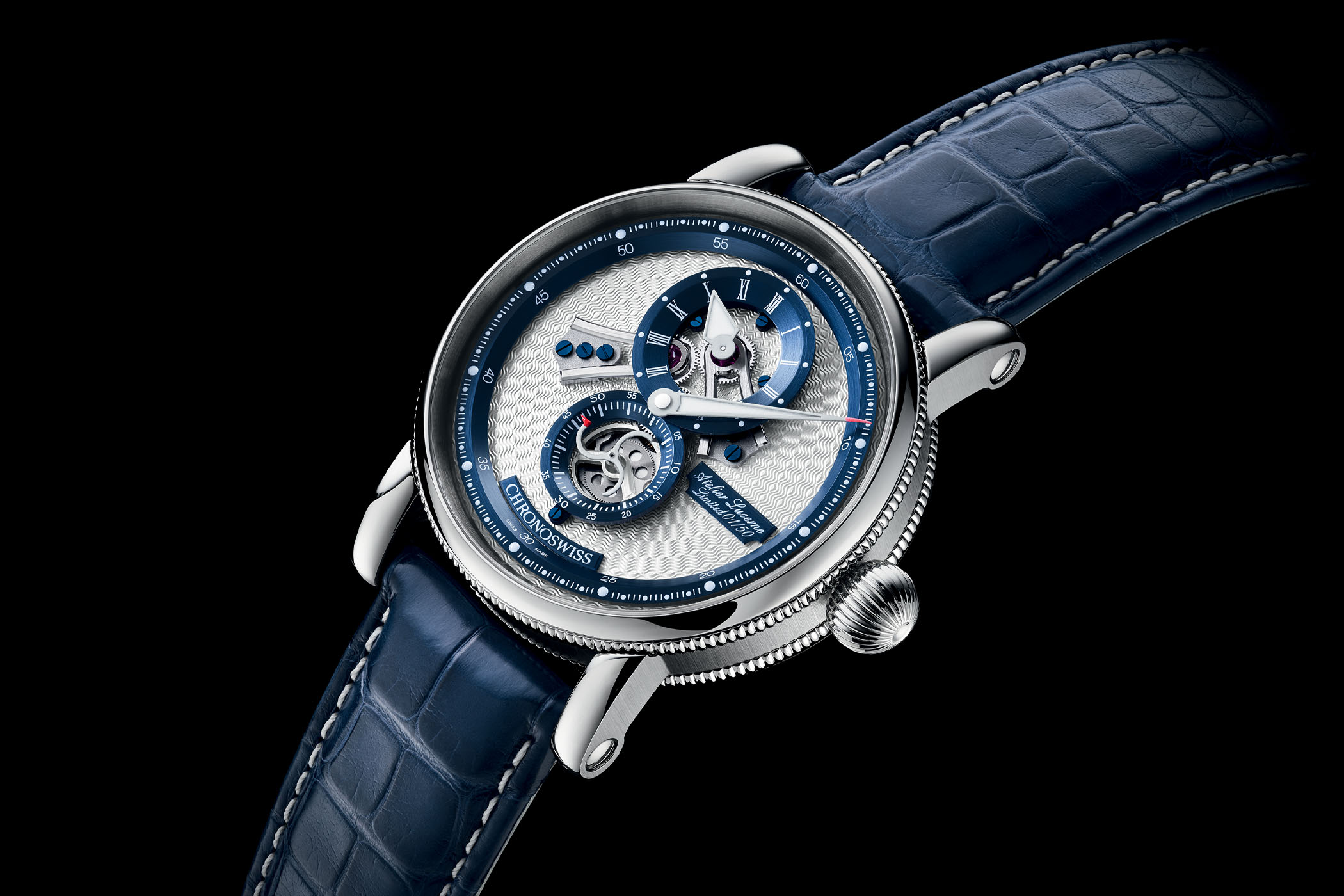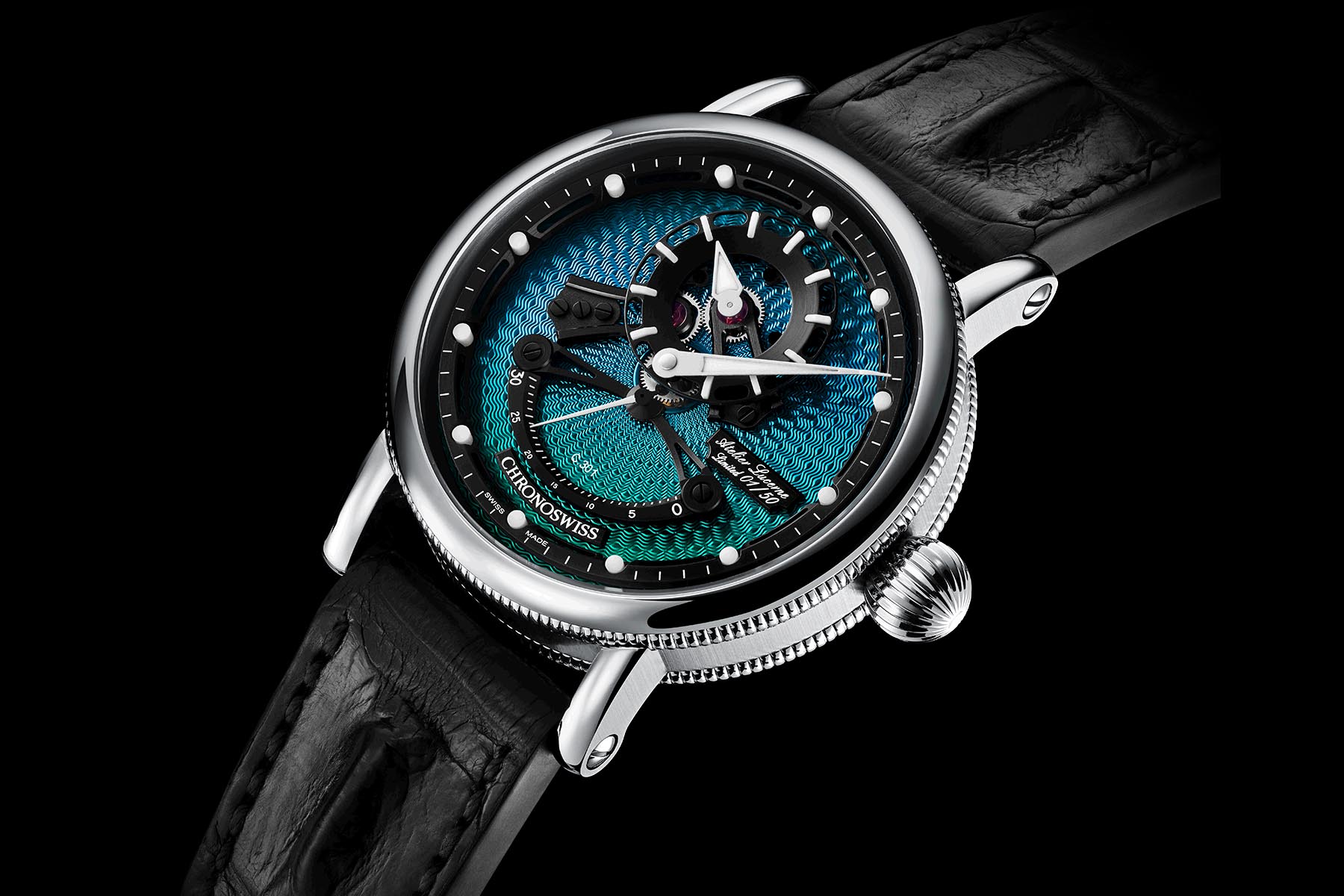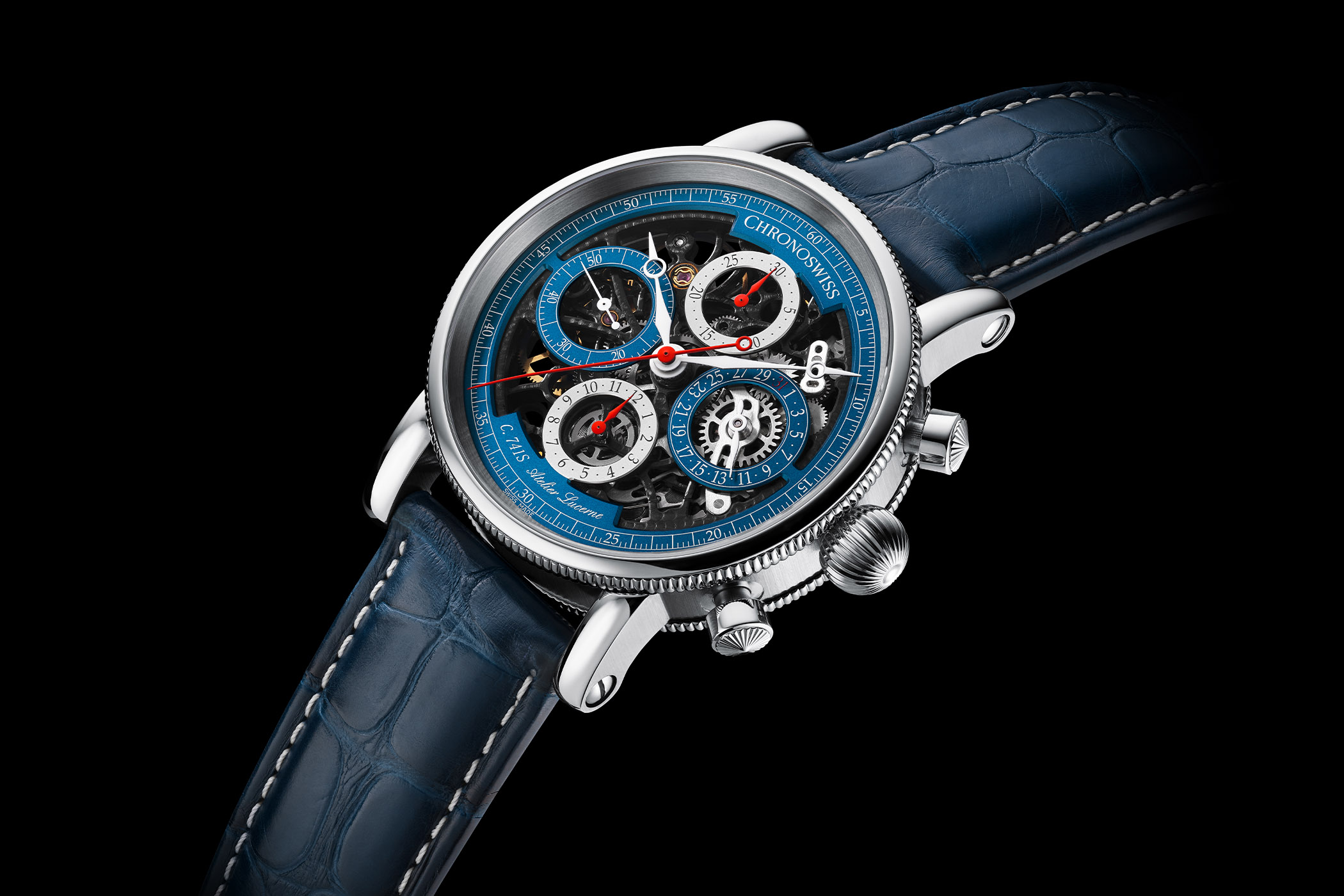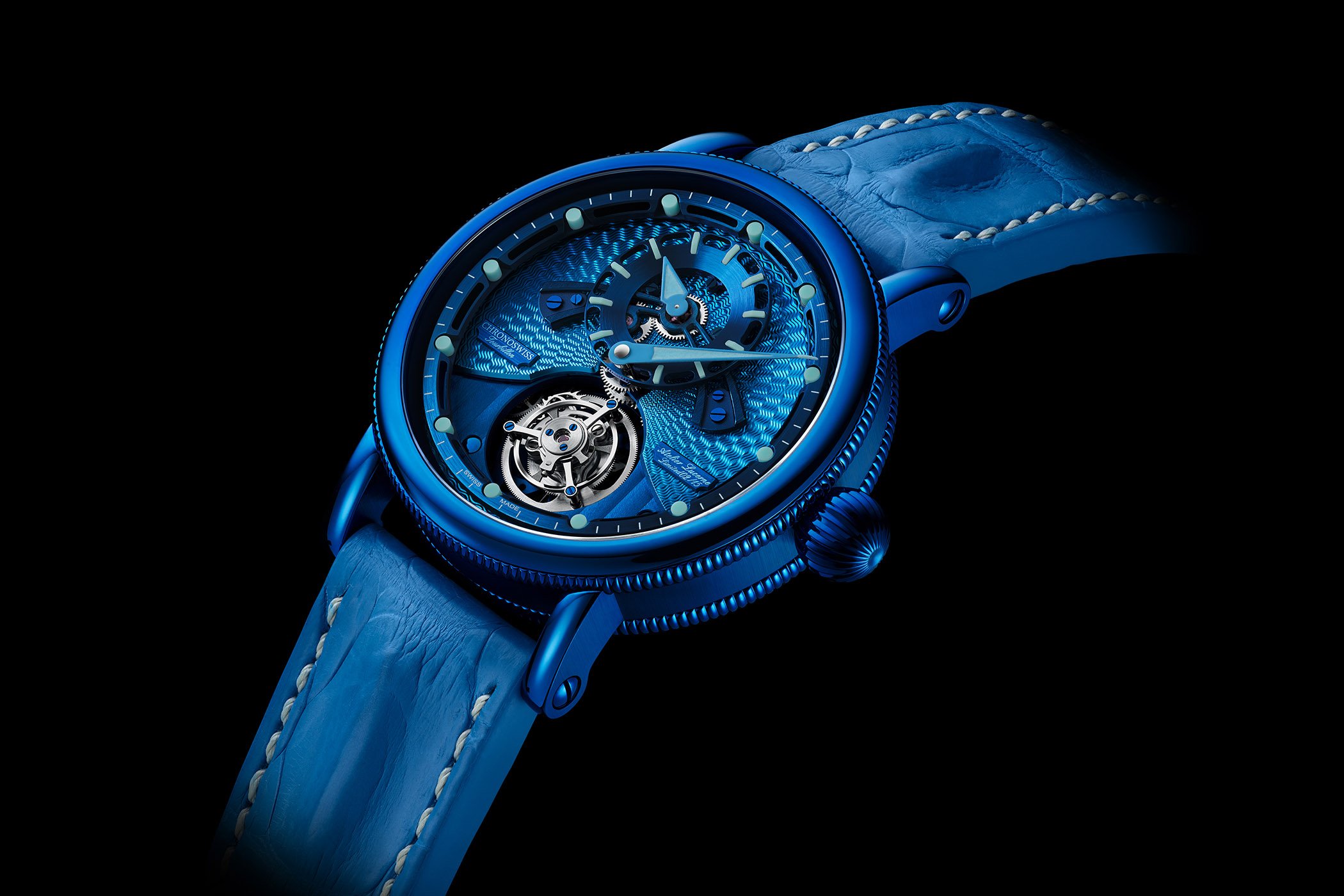Chronoswiss
Swiss independent luxury watch manufacturer
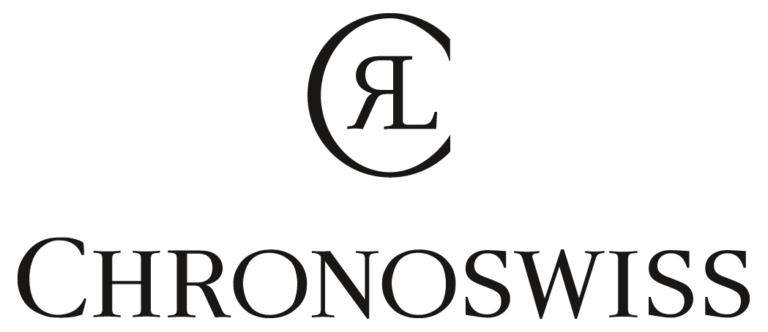
Chronoswiss is a relatively young company, founded in 1983 by Gerd R. Lang in München, Germany. Lang had already amassed extensive experience producing movements for other brands and his initial offerings with Chronoswiss reflect that, such as the Opus (first skeletonized chronograph), tourbillon and quarter repeater models. The brand was the first to produce a wristwatch with a regulator layout, the Régulateur, and they're best known for the style today (hour, minute and seconds hands in separate registers). In 2012, Chronoswiss was acquired by Oliver Ebstein and the headquarters was moved to Lucerne, Switzerland. The acquisition didn't alter the direction of the company, however, who's distinctive limited production watches retain many of the same hand-finished characteristics of the early München portfolio. The now Swiss brand remains an independent watchmaker as well.
Chronoswiss introduced their signature design language in 1987, starting with the regulator dial and continuing with the oversized onion crown, knurled bezels or case ends, and long screwed strap lugs. All of these elements remain today and the brand is best known for their regulator models. The company often modifies and hand-finishes ETA movements, adding in-house designed/produced modules for their regulators. Some models, especially from the München era, use new-old-stock movements from watch manufacturers Marvin and Enicar. This maintains a high level of Swiss quality, while keeping prices in a more affordable range by avoiding full in-house calibre production.
Few brands have designs as instantly recognizable as Chronoswiss. Their regulators stand out with unique cases, dials, lugs and crowns, and there’s a wide range of models as the brand specializes in the style. The Regulator Manufacture is virtually unchanged since the late 1980’s, featuring all of the hallmarks the brand is famous for. The knurling around the case ends, oversized onion crown and long, sloping lugs with exposed screws are all present. The regulator display is in the classic vertical arrangement, with the centralized minute hand prominent and the hour and seconds hands in small sub-dials. The C. 122 automatic in this piece is also faithful to the original, based on the Enicar 165. On the other end of the spectrum are thoroughly modern pieces like the Flying Regulator Open Gear and Flying Grand Regulator Skeleton Limited Edition. Features like multi-level dials, funnel-shaped sub-dials, and exposed gears and bridges bring an architectural and futuristic aesthetic to the classic style without removing any of the elements that make them so recognizable. Some models have complications such as date displays and jumping hours, while tourbillons have been featured in the past.
Not all Chronoswiss watches are regulators, with traditional, centrally mounted hands comprising their Sirius and Time Master lines. Models with jumping hours, perpetual calendars, moon phase and quarter repeaters are available, along with a host of chronographs. The Chronograph Skeleton harkens back to the Opus, while the Chronograph Retrograde has two retrograde displays for second and date. In 2014, the House of Chronoswiss opened at their Lucerne headquarters, allowing visitors to witness first hand the specialized techniques that go into the brand’s watches, such as high-fire enamelling and engine turning (guilloché) for dials.


